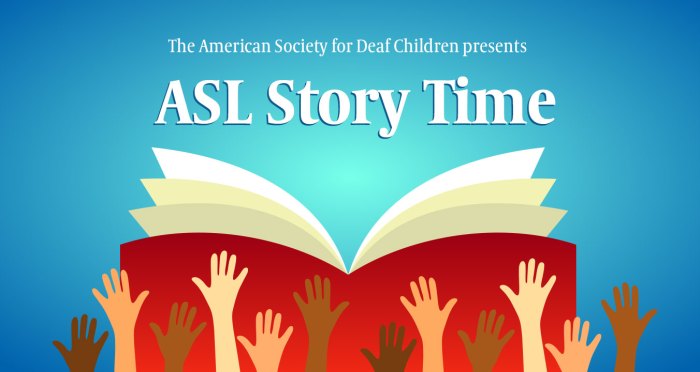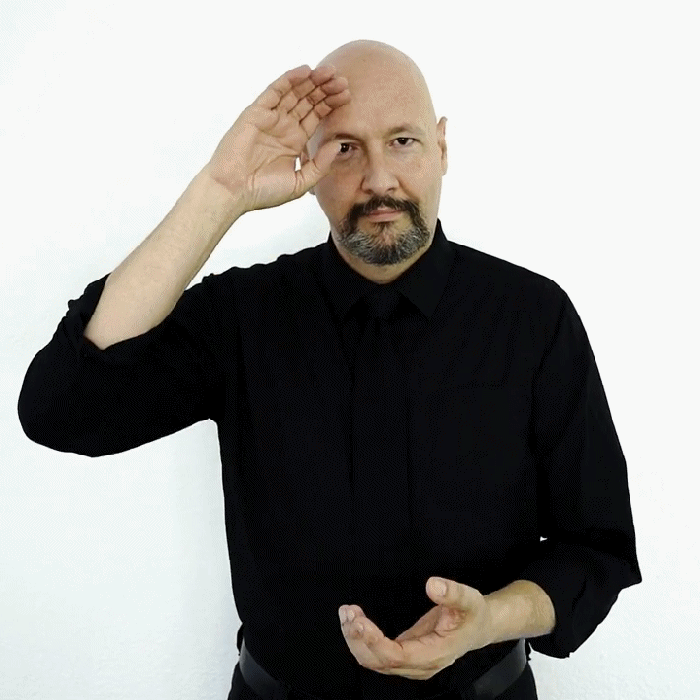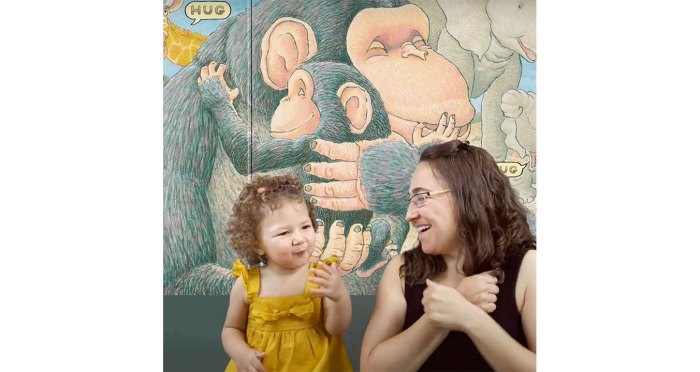Deciding to marry asl story – Embark on a poignant journey with our “Deciding to Marry: An ASL Story of Love, Challenges, and Fulfillment.” This narrative delves into the unique experiences of ASL users as they navigate the complexities of marriage, shedding light on the cultural, communication, and legal considerations that shape their decisions.
From personal anecdotes to expert insights, this comprehensive guide explores the challenges and rewards that accompany marriage for ASL users, providing valuable perspectives and practical strategies for building strong and fulfilling relationships.
Personal Experiences

In the tapestry of life, the decision to marry is a momentous thread, intertwining two hearts in an unbreakable bond. For me, this pivotal moment unfolded amidst the vibrant tapestry of American Sign Language (ASL).As a Deaf individual, ASL has been my lifelong companion, shaping my identity and connecting me to a vibrant community.
It was through ASL that I met my beloved partner, Sarah. Our shared language and experiences forged an unbreakable connection, sparking a love that transcended the boundaries of hearing and deafness.
Challenges and Rewards
Embarking on the path to marriage as a Deaf couple presented both challenges and profound rewards. One significant hurdle was navigating the complexities of a hearing world. Wedding planning, traditionally dominated by verbal communication, required us to adapt and find creative solutions.However,
these challenges were met with unwavering support from our loved ones and the Deaf community. Interpreters became our voices, bridging the gap between our world and the hearing world. ASL-fluent friends and family members played an integral role in ensuring our wedding day was a celebration of our unique bond.
The Decision
The decision to marry was a profound and deeply personal one. It was not a matter of following societal norms or expectations but rather a heartfelt commitment to the love and companionship we shared. ASL had not only brought us together but had also become the foundation of our relationship.As
we exchanged vows in the presence of our loved ones, signing our hearts out, I felt an overwhelming sense of joy and fulfillment. Our marriage was a testament to the power of ASL, a language that had not only united us but had also empowered us to create a life filled with love, laughter, and shared experiences.
Cultural Considerations: Deciding To Marry Asl Story
Culture plays a significant role in shaping societal norms and values, including those related to marriage. Different cultures have distinct perspectives on marriage, which can influence the decision-making process of individuals within those cultures.
For instance, in some cultures, marriage is viewed primarily as a social institution that strengthens familial ties and ensures the continuation of the family line. In such cultures, individuals may feel obligated to marry within their own cultural group and may prioritize factors such as family approval and social status when making their decision.
Arranged Marriages
In certain cultures, arranged marriages are still prevalent. In this system, parents or guardians select a suitable partner for their child, often based on factors such as social standing, economic stability, and compatibility. While arranged marriages may provide a sense of security and stability, they can also limit individual choice and autonomy.
Love Marriages
In contrast, other cultures emphasize the importance of love and personal choice in marriage. Individuals are expected to find a partner they genuinely care for and share common values with. This approach allows for greater individual autonomy but may also introduce challenges such as finding a compatible partner and navigating potential cultural or familial disapproval.
Cultural Expectations
Cultural expectations can also influence the timing and expectations of marriage. In some cultures, there may be pressure to marry at a certain age or stage in life. These expectations can create additional stress and pressure on individuals as they navigate the decision-making process.
Communication Challenges
ASL users face unique communication challenges in marriage. The inability to hear and speak can create barriers in understanding each other’s thoughts, feelings, and intentions.
These challenges can significantly impact the decision-making process for marriage. Communication is crucial for building a strong foundation, resolving conflicts, and navigating life’s complexities together.
I’m still mulling over my decision to marry ASL. I need to consider the day supply for eye drops and other such mundane details. But the more I think about it, the more I realize that it’s not just about the practicalities.
It’s about finding someone who understands me, someone who can communicate with me in a way that no one else can.
Overcoming Communication Barriers, Deciding to marry asl story
- Patience and Understanding:Both partners must be patient and understanding of each other’s communication styles. They should allow ample time for communication and be willing to repeat or rephrase if necessary.
- Visual Aids:Utilizing visual aids, such as writing, drawing, or sign language interpreters, can enhance communication and reduce misunderstandings.
- Technology:Technology, such as video calling and messaging apps, can facilitate communication when in-person interactions are not possible.
- Support Groups:Joining support groups or connecting with other ASL couples can provide a sense of community and offer strategies for overcoming communication challenges.
Support Systems

Support systems play a crucial role in the decision to marry for ASL users. These systems provide emotional, social, and practical assistance that can help individuals make informed decisions about their future.Different types of support systems available to ASL users include family, friends, community groups, and professionals such as counselors or therapists.
Family and friends can offer love, understanding, and guidance. Community groups provide a sense of belonging and shared experiences. Professionals can provide objective advice and support.Support systems can help individuals:
- Explore their feelings and values about marriage
- Identify their needs and goals
- Weigh the pros and cons of marriage
- Make informed decisions about their future
Legal Considerations

Marriage is a legal contract that provides rights and responsibilities to both partners. For ASL users, understanding the legal considerations involved in marriage is essential to ensure their rights are protected and their wishes are respected.
Marriage Laws in Different Jurisdictions
Marriage laws vary across different jurisdictions, including the recognition of same-sex marriages, the age of consent, and the grounds for divorce. It is important for ASL users to be aware of the laws in their specific jurisdiction to understand their rights and obligations.
Implications of Marriage Laws for ASL Users
Marriage laws can have significant implications for ASL users. For example, some jurisdictions may not recognize sign language as a valid form of communication, which can create challenges in obtaining a marriage license or communicating during legal proceedings. Additionally, the age of consent for marriage may be different for ASL users in some jurisdictions, which can impact their ability to enter into a legally binding marriage.
Financial Implications

Marriage brings about financial implications that ASL users should be aware of. These include changes in income, benefits, and expenses. Understanding these changes can help couples make informed decisions about their financial future.
Income
Marriage can affect income in several ways. For example, one spouse may become eligible for additional benefits, such as health insurance or retirement savings plans, through their partner’s employer. Additionally, married couples may be able to file joint tax returns, which can result in tax savings.
Benefits
Marriage can also affect access to government benefits. For example, low-income married couples may be eligible for Medicaid or other assistance programs. Additionally, married couples may be able to receive Social Security benefits based on their spouse’s earnings record.
Expenses
Marriage can also lead to increased expenses. For example, couples may need to purchase a larger home or rent a more expensive apartment to accommodate their growing family. Additionally, couples may have to pay for childcare or other expenses related to raising children.
Relationship Dynamics

ASL-using couples face unique relationship dynamics influenced by their shared language and communication style. Effective communication is crucial, as is understanding the nuances of nonverbal cues and facial expressions.
Additionally, cultural differences and social norms can impact relationship dynamics. Deaf culture values community and inclusivity, which can affect how couples navigate social situations.
Communication
Communication is the cornerstone of any relationship, and for ASL-using couples, it takes on a unique form. ASL is a visual language that allows for nuanced expression and a deep understanding of emotions.
ASL-using couples often develop a shared signing style that enhances their communication. This shared language fosters intimacy and allows for deeper levels of understanding.
However, communication challenges can arise when one partner is more fluent in ASL than the other. This can lead to misunderstandings and frustration, especially during heated discussions.
Strategies for Building and Maintaining Healthy Relationships
Building and maintaining healthy relationships requires effort and commitment from both partners. For ASL-using couples, the following strategies can be particularly helpful:
- Establish Clear Communication Expectations:Discuss and agree on how you will communicate in different situations, ensuring both partners feel heard and understood.
- Practice Active Listening:Pay attention to both verbal and nonverbal cues, and ask clarifying questions to ensure comprehension.
- Respect Cultural Differences:Understand and appreciate each other’s cultural backgrounds and how they may influence communication styles and expectations.
- Seek Support:Connect with other ASL-using couples or join support groups to share experiences and learn from others.
FAQ Summary
What are the unique communication challenges faced by ASL users in marriage?
ASL users may experience communication barriers due to differences in language, grammar, and cultural context. These challenges can affect relationship dynamics and decision-making.
How can support systems help ASL users in making informed decisions about marriage?
Support systems, such as family, friends, and the Deaf community, can provide emotional support, practical advice, and cultural insights that help ASL users make informed decisions about marriage.
What are the legal considerations that ASL users should be aware of when getting married?
ASL users should be aware of marriage laws in their jurisdiction, including provisions for communication access, legal representation, and the recognition of ASL as a valid language.